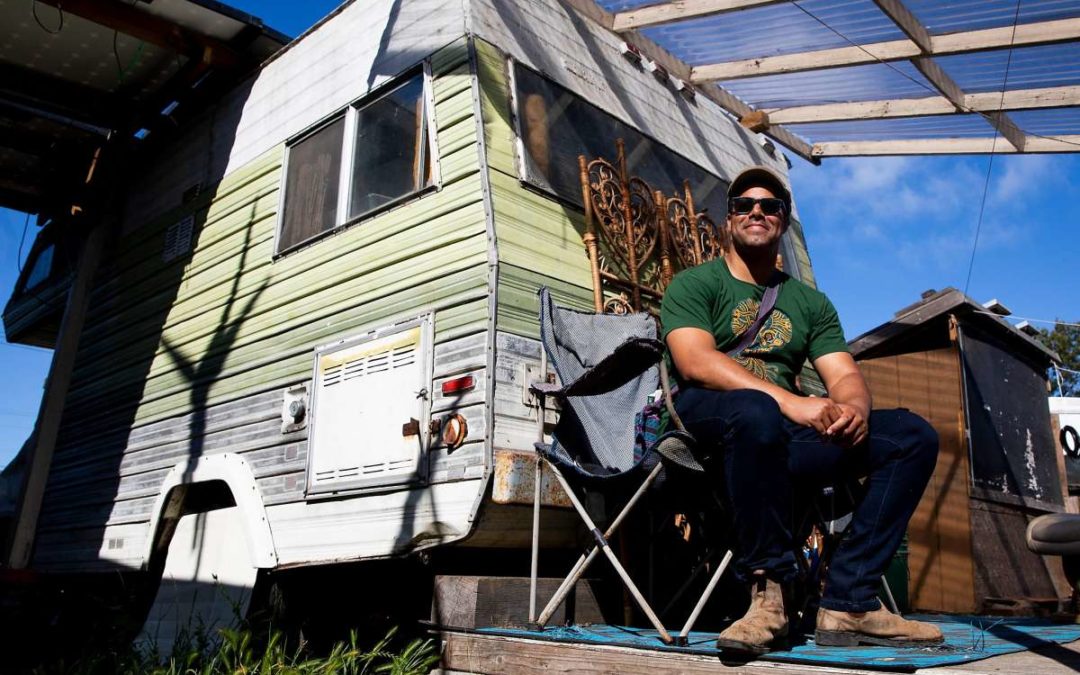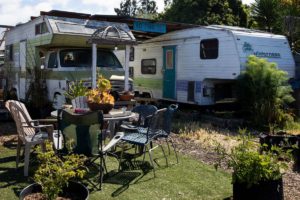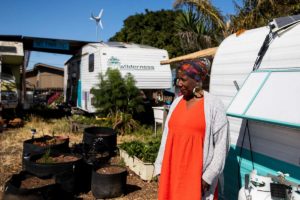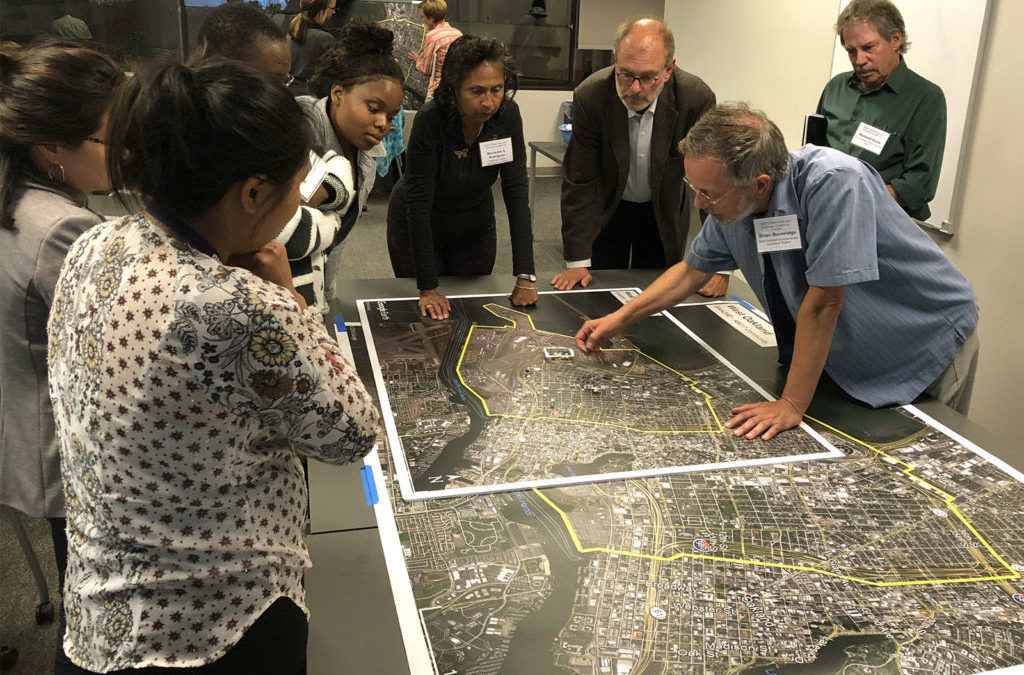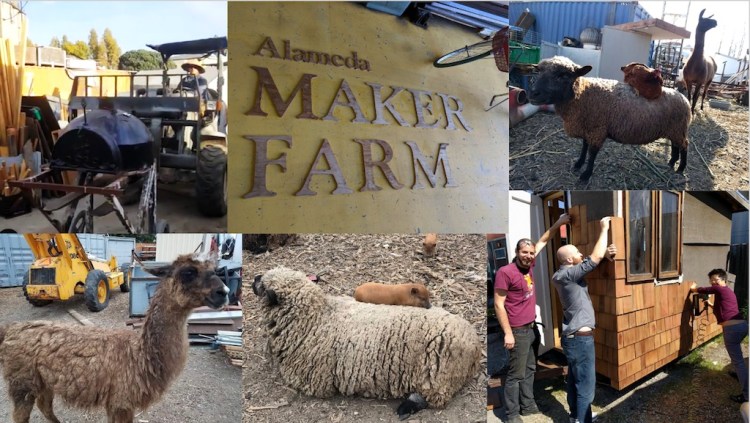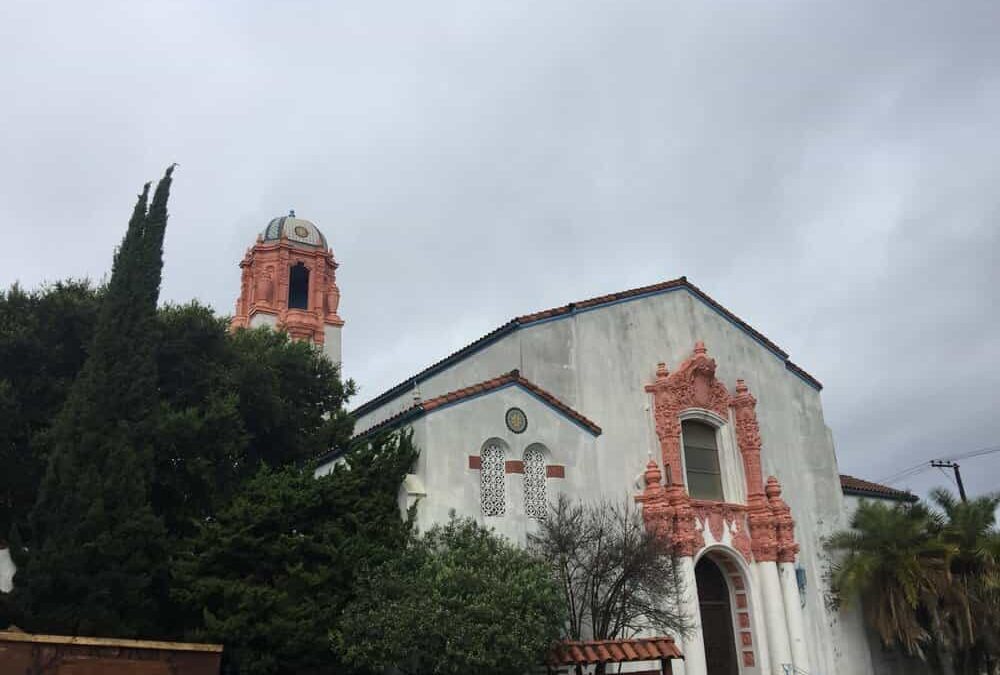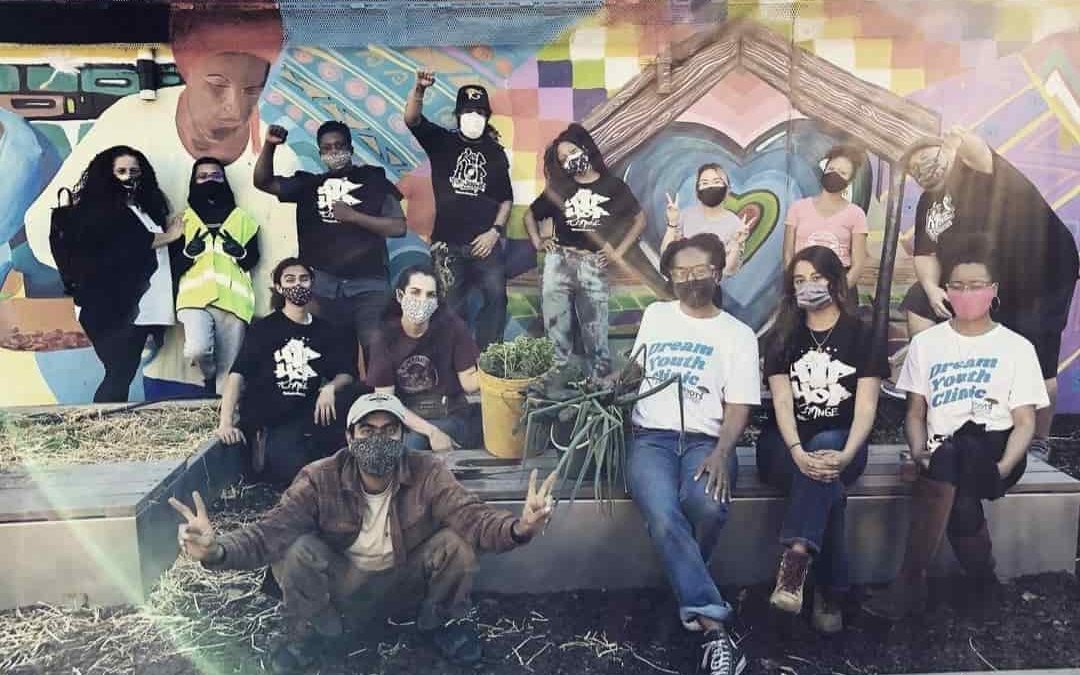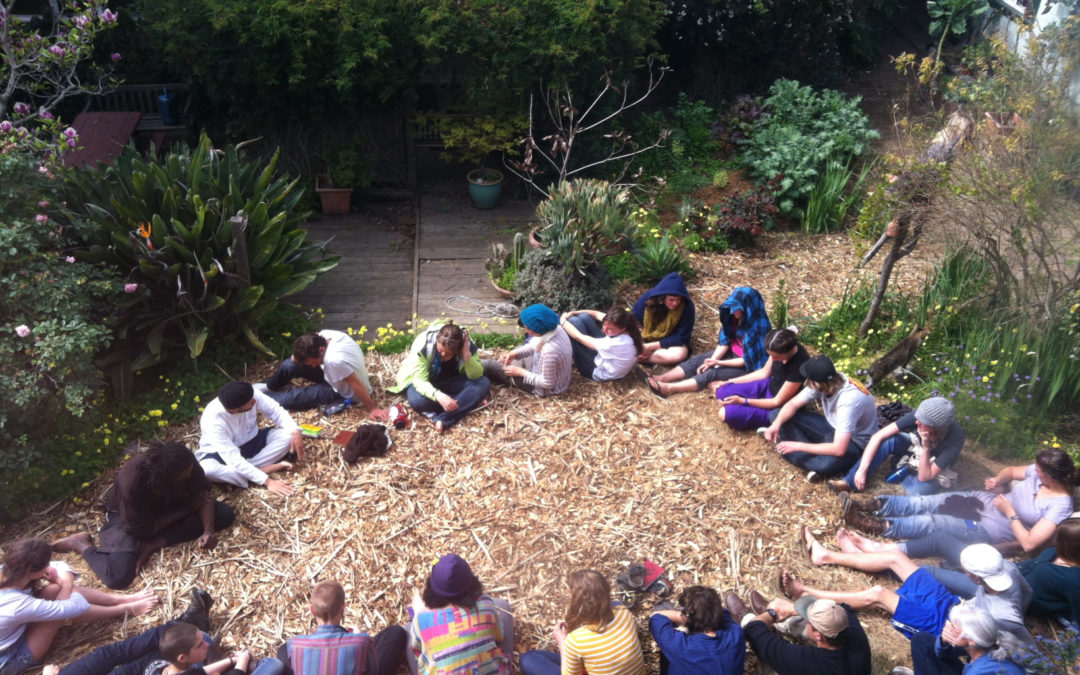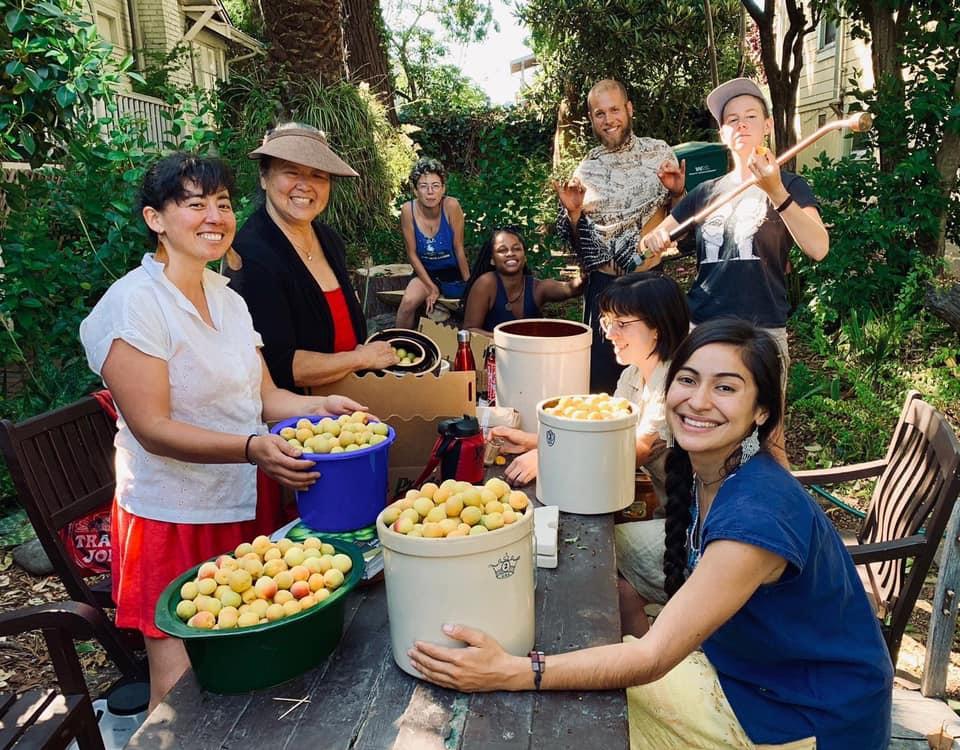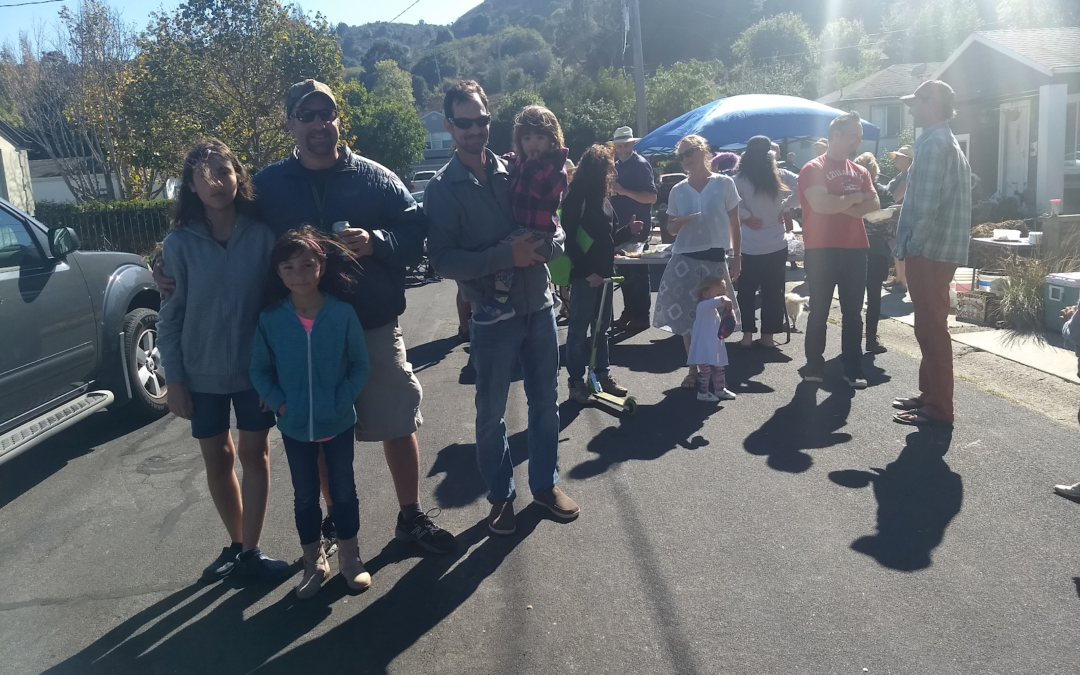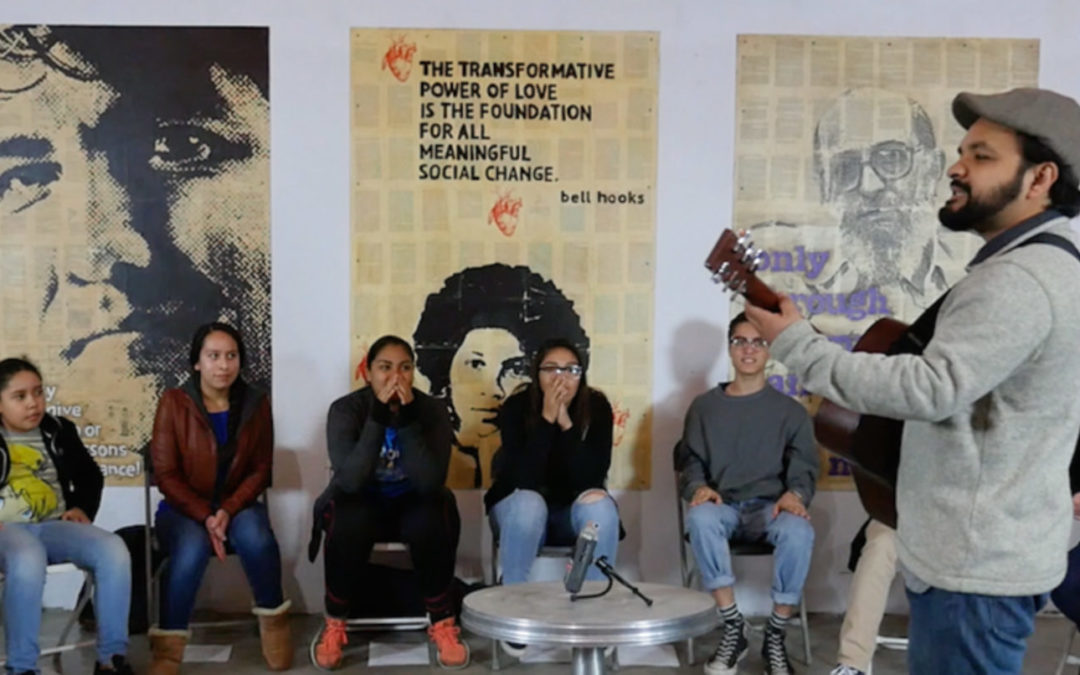
Case Study: Boyle Heights
Boyle Heights Case Study
The Boyle Heights Art Conservatory, located in just south of Downtown Los Angeles, has a rich history of collaborative spirit and energy, starting with its original construction as a multicultural gathering place in 1925. Today, as climate change continues to disproportionately affect communities, the staff and youth at the conservatory is tasked with expanding their endurance.
Climate Resolve is a non-profit organization that works with predominantly Black, Indigenous, and People of Color to achieve a “just and resilient future” through equitable climate solutions. In partnership with Climate Resolve, the Boyle Heights Art Conservatory serves as a model example of a Resilience Hub: a trusted space that displays both their deep-rooted culture and disaster preparedness.

Building Resilience
As of 2021, the conservatory includes cooling and heating facilities. The building has been retrofitted for earthquakes, water filtration systems have been set in place, and the landscaping is drought tolerant. Back-up power is also available in case of a disaster.
Climate Resolve and the Boyle Heights Art Conservatory regularly communicate with their community members in order to keep up with their needs. Because of their diverse environment, this resilience hub is able to translate their information in languages in English and Spanish. Their strong connections to the Indigenous community in the area allows them to understand and learn about native edibles and medicinal plants. Role models such as Tochtli Orozco have paved the way for environmental activism and awareness within the resilience hub. In fact, Tochtli lives in a tree!
Throughout the pandemic, staff members like Joey Rodriguez (a Youth Coordinator) volunteered at vaccination sites to help distribute vaccines and guide people in both Spanish and English. Throughout his teen years, Joey learned to “keep an ear open and listen to community members.” The conservatory plays an important role in Joey’s perception of the community: “Do not treat your neighbors like a business.” Instead, Joey is a firm believer in fruitful and long-lasting work that benefits the whole community.
Similarly, Chase Engelhardt, a Policy Analyst & Organizer at Climate Resolve, has learned to engage with people at their comfort levels: “People can feel overwhelmed by not being able to accomplish their goals. But the important thing is: do something.”
A Rich History: Setting a Precedent
In the early 1920s, members of the Cooperative Consumers League, a Jewish Socialist group, commssioned the construction of a building that would serve as a gathering place for Mexicans, Japanese and African Americans. At the corner of North Mott Street and East Cesar Chavez Avenue, the building provided a bakery and café on the first floor, a large ballroom in the middle, and meeting rooms on the top floor. The Jewish Bakers Union 453, who ran the bakery, played a valuable role in distributing low-cost bread. During the Great Depression, the café served as a soup kitchen.
During the 1930s, The Cooperative Center was pivotal in organizing marches, rallies, and protests against police harassment during the Los Angeles Police Department (LAPD) Red Squad’s persecution of communists. In 1931, fellow community members were arrested for helping Mexican and Filipino farmworkers strike against hazardous and inadequate work conditions.
Later in the 1940s and into the 1960s, this site continued to embrace its multi-ethnic community. The Paramount Ballroom hosted Latinx and African American musicians such as Tito Puente, Arsenio Rodríguez, and The Six Teens. The ballroom welcomed all kinds of music such as punk, ska, goth, reggae, hip-hop, doo-wop and oldies. Flamenco, tap, ballet and boogie-woogie dancing decorated the ballroom floors every weekend.
Modern Day: Continuing Community Building
The long history of arts and activism function as the foundations of the Boyle Heights Arts Conservatory, which began in 2011. The Boyle Heights community is marked by their ability to continuously provide vulnerable members with a safe space rich with culture, education, and opportunities.
Now, celebrating almost 100 years since the building’s opening, the Boyle Heights Art Conservatory “provides a focus on career development for historically disenfranchised and impacted youth who are interested in pursuing careers in film, television, broadcasting, music and digital content creation.” The conservatory hosts 101.5 FM KQBH L.A., which is a community radio station run by local youth. In addition to the radio station, classes for their community range from stop motion animation to introduction to DJing, to YouTube/acting.
Looking Ahead
The Boyle Heights Resilience Hub has come a long way in building resilient structures, and are now turning their focus to broadening their conservation efforts. The staff is eager to incorporate potential programs that further educate community members in native plants and gardening. The staff also learned that the hub will need more space and supplies like masks and air filters. They have recognized the need to start implementing more programs that allow community members to be trained in CERT and/or First Aid. Nonetheless, the Boyle Heights Art Conservatory will continue to serve its community members with labor, time, and money. The strong relationships they fostered with their culture and environment will aid Boyle Heights on their journey towards resilience.
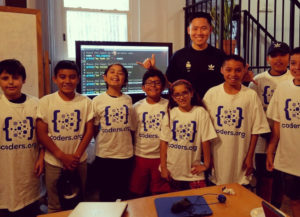
You can learn more about the Boyle Heights Art Conservatory and how to support them through their website and this video:
